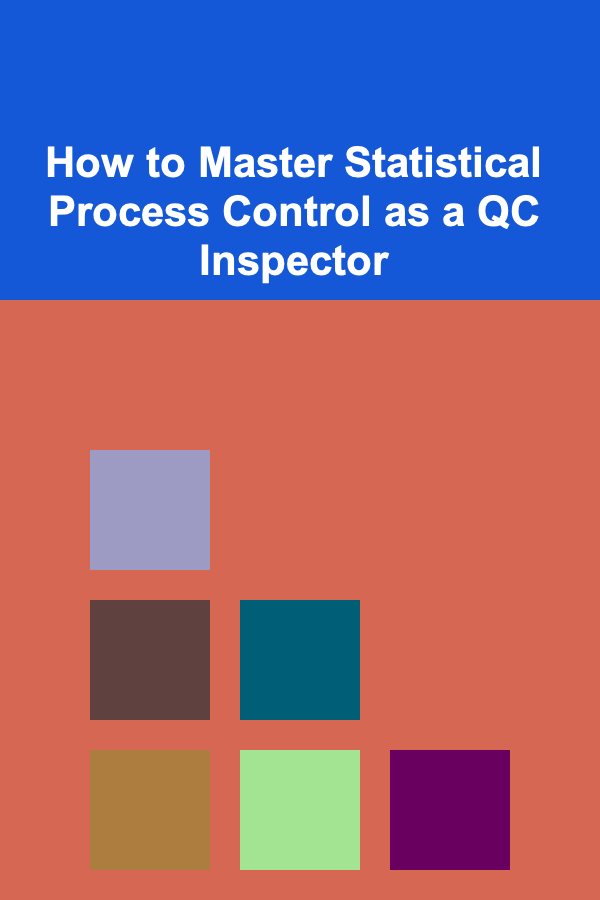
How to Create a Daily To-Do List for Creative Professionals
ebook include PDF & Audio bundle (Micro Guide)
$12.99$7.99
Limited Time Offer! Order within the next:

As a creative professional, staying organized and focused can be a challenge. The creative process often requires free-flowing ideas and inspiration, but at the same time, there are deadlines to meet and tasks that require structure. This can create a constant tug-of-war between the need for creativity and the need for productivity. A daily to-do list can help strike the right balance between these two elements, allowing creative professionals to stay on top of their work while still allowing time for creativity.
In this article, we'll explore how to create a daily to-do list specifically tailored for creative professionals. We'll discuss why a to-do list is so important, how to structure your list to maximize creativity and productivity, and provide practical tips for sticking to it.
Why Creative Professionals Need a To-Do List
Creative professionals often face the dual challenge of managing both creative tasks and routine responsibilities. While creativity can sometimes feel spontaneous and unpredictable, it is essential to ensure that your creative output is also productive and meets deadlines. A daily to-do list acts as a roadmap that ensures you are completing essential tasks while also leaving space for your creative process.
A to-do list offers several key benefits:
- Clarity and Focus: A to-do list gives you clarity about your daily tasks, preventing you from feeling overwhelmed by the sheer volume of things that need to get done.
- Improved Time Management: It helps you allocate specific time blocks for different tasks, ensuring that you're not spending too much time on one project or neglecting others.
- Increased Accountability: By listing out your tasks, you hold yourself accountable for completing them, which increases productivity.
- Helps You Prioritize: A to-do list forces you to assess what's most important and urgent, which helps you focus your energy where it matters most.
- Reduces Stress: When you know exactly what needs to be done and when, you reduce the mental clutter that often leads to stress and procrastination.
How to Structure Your To-Do List for Maximum Effectiveness
For creative professionals, the structure of your to-do list is just as important as the tasks themselves. Simply writing down a list of tasks won't do much to help you stay on track. The key is to organize your list in a way that makes sense for both creative and non-creative tasks. Let's explore the best ways to structure your daily to-do list.
1. Break Your Day into Different Time Blocks
A key challenge for creative professionals is managing both long-term projects and short-term tasks, such as emails or client calls. By dividing your day into time blocks, you can dedicate specific periods to specific types of work. This way, you ensure that you're making progress on big projects while also handling daily tasks.
For example, consider the following time blocks:
- Morning Block (Creative Time): Many creative professionals find that they do their best work in the morning. Dedicate this block of time to brainstorming, designing, writing, or any other deep work that requires focused concentration.
- Midday Block (Routine Tasks): After a morning of creative work, it's good to tackle more routine tasks that are still important but don't require as much creativity. This could include replying to emails, managing social media, or attending meetings.
- Afternoon Block (Creative Refinement): The afternoon could be spent refining and editing the work completed in the morning. At this point, you might be slightly less energetic, so focus on tasks that don't require as much creative energy but are still essential to completing the project.
- Evening Block (Wrap-Up & Planning): Reserve the evening to wrap up any remaining tasks from the day. This is also a good time for setting goals for the next day, allowing you to start the following day with a clear sense of direction.
2. Prioritize Your Tasks
Not all tasks are created equal, so it's crucial to prioritize your to-do list. Some tasks may be time-sensitive, while others are important but can be delayed. A good approach is to use the Eisenhower Matrix, which categorizes tasks based on urgency and importance:
- Urgent and Important: Tasks that need immediate attention and are directly tied to your creative work (e.g., a client deadline or an important presentation).
- Important but Not Urgent: Tasks that are crucial for your overall creative progress but don't require immediate action (e.g., brainstorming for a new project or long-term planning).
- Urgent but Not Important: Tasks that are pressing but don't significantly impact your creative output (e.g., answering emails or setting up meetings).
- Not Urgent and Not Important: Tasks that can be postponed or delegated (e.g., organizing your workspace or researching unrelated topics).
By prioritizing your tasks, you ensure that you're focusing on the things that will have the most impact on your creative career.
3. Include Both Creative and Non-Creative Tasks
While your to-do list should focus on your creative tasks, it's important to include non-creative tasks as well. These tasks might include:
- Client Communications: Responding to emails or providing updates to clients.
- Administrative Work: Updating invoices, managing budgets, or scheduling meetings.
- Self-Care: Taking breaks, exercising, or eating lunch.
Creative professionals often neglect these non-creative aspects of their work, but they're essential for maintaining a balanced and productive day. Be sure to include them on your list so you can stay on top of everything.
4. Set Realistic Goals for the Day
Creative work can be unpredictable, so it's important to set realistic and achievable goals for the day. If you try to fit too much into your day, you'll risk burnout or frustration when things don't go as planned. Instead, be realistic about how much you can accomplish, and prioritize quality over quantity.
Here's how you can set realistic goals:
- Be Specific: Instead of writing "work on project," specify what part of the project you'll focus on, such as "design logo" or "write outline for blog post."
- Set Time Limits: Allocate a certain amount of time for each task. For example, you might decide to spend 2 hours working on a design, then switch to another task.
- Allow Flexibility: Understand that some tasks might take longer than expected. Allow yourself some flexibility in your schedule to account for delays.
5. Break Down Larger Tasks into Smaller, Manageable Steps
Creative projects often seem daunting, especially when they are complex or long-term. To prevent feeling overwhelmed, break down these large tasks into smaller, more manageable steps. This makes the work feel less intimidating and helps you maintain a sense of progress.
For example, instead of writing "finish design project," break it down into smaller steps like:
- Research inspiration: 30 minutes
- Create rough sketches: 1 hour
- Refine design: 2 hours
- Get feedback from client: 1 hour
By breaking large projects into smaller tasks, you'll maintain momentum and feel more accomplished throughout the day.
6. Include Time for Creative Exploration
Creativity thrives when there's space for exploration and experimentation. While it's important to have structure and deadlines, it's equally crucial to set aside time for creative exploration, which may not lead to immediate outcomes. This could include free sketching, mind-mapping, or trying new creative techniques.
To ensure this is part of your daily routine, dedicate a portion of your to-do list to exploration. This could be as simple as scheduling a 30-minute "creativity session" where you let your mind wander and experiment without the pressure of deadlines.
7. Use a Digital or Paper Tool That Works for You
The tools you use to create your to-do list can have a significant impact on how effective your planning is. Some creative professionals prefer digital tools, while others prefer the tactile experience of writing things down by hand. Both methods have their advantages, so choose what works best for you.
Here are some popular options:
- Digital Tools: Apps like Todoist, Trello, Asana, or Notion offer easy-to-use interfaces for managing tasks. They allow you to create checklists, set reminders, and even collaborate with others if needed.
- Paper Planner: Some creative professionals find that writing tasks by hand helps them focus. A bullet journal or a daily planner can be a great tool for this. Plus, the act of writing tasks down can help you internalize them more effectively.
8. Review and Adjust Your List Regularly
Your to-do list should be a living document. At the end of each day, review your list and adjust it for the following day. This review process helps you stay on track and ensures that nothing important is overlooked.
Ask yourself the following questions during your review:
- What tasks did I complete today?
- What tasks did I not complete and why?
- Do any tasks need to be adjusted or rescheduled?
Adjusting your list regularly ensures that it remains relevant and effective.
9. Embrace Flexibility
Creative work is inherently unpredictable. You may find that some days your creativity flows easily, while other days it feels harder to generate ideas. Embrace the flexibility of your to-do list and allow yourself to adjust based on your energy and inspiration levels. If you find that one task requires more time than expected, don't stress. Move tasks around as needed, keeping the bigger picture in mind.
10. Celebrate Your Wins
At the end of the day, take a moment to reflect on your achievements. Celebrate the tasks you've completed, even if they seem small. Recognizing your progress helps boost motivation and gives you the energy to tackle tomorrow's list with enthusiasm.
By following these steps, you can create a daily to-do list that works for you as a creative professional. The key is to strike the right balance between structure and flexibility, ensuring that you remain productive without stifling your creativity. With a well-planned to-do list, you'll be able to achieve your creative goals while also staying organized and focused on the tasks that need to get done.
Reading More From Our Other Websites
- [Home Storage Solution 101] How to Use Vacuum Storage Bags Like a Pro: Maximize Your Closet Space and Protect Your Off-Season Clothes
- [Home Space Saving 101] How to Create a Functional Kitchen Island with Built-in Storage
- [Home Budget Decorating 101] How to Add Statement Pieces to Your Home Without Breaking the Bank
- [Home Maintenance 101] How to Install Flooring: A Complete Guide from Preparation to Finishing
- [Home Budget 101] Best Home Budget for First-Time Homeowners
- [Metal Stamping Tip 101] Top Materials and Tooling Choices for Ultra-Fast Metal Stamping Applications
- [Personal Care Tips 101] How to Adjust Your Personal Care Routine for Seasonal Changes: A Comprehensive Guide
- [Home Security 101] How to Secure Your Home's Driveway with Smart Technology
- [Organization Tip 101] How to Create a Daily Routine that Supports Minimalism
- [Personal Finance Management 101] How to Plan for Taxes and Maximize Deductions

How to Decorate Your Home for the Holidays with Eco-Friendly Materials
Read More
How to Plan a DIY Home Renovation Project from Start to Finish
Read More
What Are the Best Ways to Streamline Your Evening Routine?
Read More
Mastering Freestyle Rollerblading: A Comprehensive Guide
Read More
How to Master Statistical Process Control as a QC Inspector
Read More
10 Must-Have Items for a Grilling Checklist
Read MoreOther Products

How to Decorate Your Home for the Holidays with Eco-Friendly Materials
Read More
How to Plan a DIY Home Renovation Project from Start to Finish
Read More
What Are the Best Ways to Streamline Your Evening Routine?
Read More
Mastering Freestyle Rollerblading: A Comprehensive Guide
Read More
How to Master Statistical Process Control as a QC Inspector
Read More